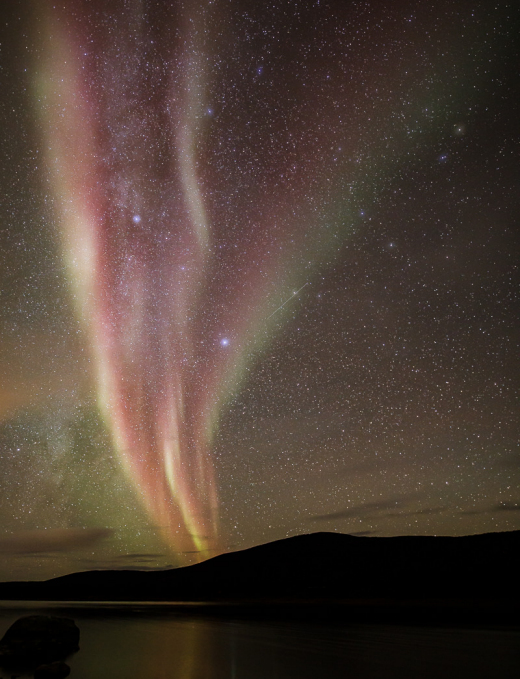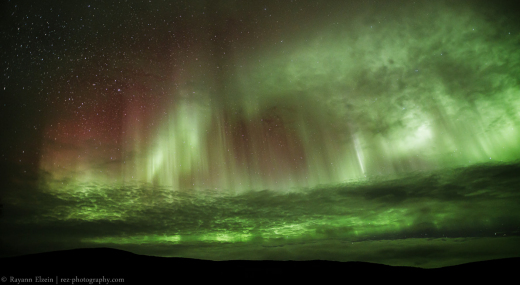Oct. 25, 2020: On Friday night, Oct. 22nd, longtime Mars photographer Maximilian Teodorescu of Magurele, Romania, looked at the Red Planet and noticed something he hadn’t seen before. “There is a dark streak in the Tharsis volcanic plateau,” he says. The mystery smudge is circled in these two images separated by about 40 minutes:

“The feature was not visible just a few nights ago when I photographed the same region,” says Teodorescu, who offers an Oct. 19th image for comparison. “Now, I have seen it two nights in a row (Oct. 22nd and 23rd), and other observers have seen it, too.”
What is it? Teodorescu’s first thought was “it must be some kind of cloud or streamer of dust.” Indeed, it is located in the same general area where a long icy cloud sometimes forms when wind whips around the summit of Arsia Mons, an extinct volcano.
To investigate further, Teodorescu projected the streak down onto a Mars Orbiter image of the region:

“The streak is about 600 km long,” he says. “It is close to Arsia Mons, but not a perfect match. Perhaps it is a shadow of the volcano’s ice cloud projected down onto lower Tharsis clouds.”
Mars photographers everywhere are encouraged to keep an eye out for this dark feature whenever the Tharsis volcanoes are facing Earth. Report your observations here, and we will share them.

